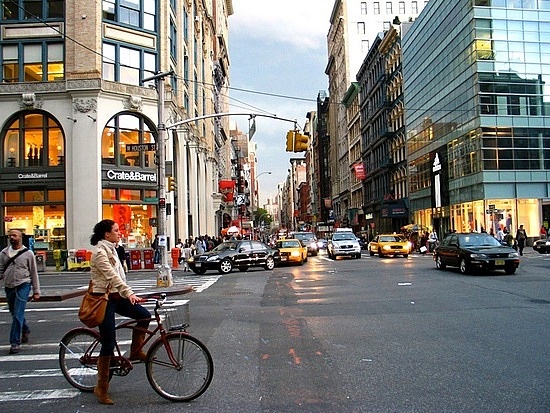Before Chelsea became the dominant art district in New York that it is today, SoHo was the contemporary art center of the city. Low rents and real estate with ground-level storefront spaces are what initially attracted artists to the SoHo neighborhood. As the area built up its reputation and popularity as a center for art and culture, business was drawn by the opportunities for expansion and profit. This influx in the demand for real estate in the area drove the prices up. While many attribute the art exodus out of SoHo to Chelsea solely to the increase in real estate prices, as Molotch and Treskon write, “Displacement is a function of particular combinations of rent price and profit potential in the product being sold.” In other words, the well documented move of the art district was caused not only by rising real estate prices but also by art prices. As the authors point out, right at the moment that property prices in SoHo were reaching a high in the mid 1990’s, the price for art, which had previously been rising as well, dropped significantly. In combination these factors led to a reduced profit or, “affordability ratio” for the art market, and resulted in its move to Chelsea led by a few of the most powerful art dealers.
In SoHo, artists lived and worked in the same neighborhood, and the small spaces in the buildings limited the size of the art being created. In the move to Chelsea, where spaces were much larger, the art being produced became much larger but it is hard to determine which led the other first. Most likely a combination of both the changing taste in art towards large-scale work and the availability of larger studio and gallery spaces were equally influential. Interestingly, it appears that most other cities have not typically had this high concentration of art galleries in one art district, but rather a scene that is more interspersed throughout. More recently though, some cities appear to be developing and establishing more solid and defined art districts, especially those in Europe.
Considering the historical movement of the art district in New York, I suspect that Chelsea, like SoHo, will not be the center of the contemporary art scene permanently. The art market has shown itself to be quite mercurial with its tastes, styles, interests, and trends constantly changing. Keeping this in mind, I think it is easy to imagine another move due to any number of factors especially if it is led by one of the innovators or well-known players of contemporary art who could trigger others to follow. As Chelsea becomes more popular and the retailers invade (I was there in November and many high end retail stores had already moved in), the art scene may be pressured to move again. One advantage that Chelsea has in terms of maintaining the area as an art district and preventing the influx of other businesses is the relative lack of transportation to the area compared to that of SoHo. While I think this will certainly slow the business/retail sector’s arrival, it will not prevent it entirely. The appeal of the Highline will also draw commerce and potentially become a factor in pushing the arts out even while its initial purpose was to highlight and strengthen Chelsea and its vibrant art scene. There are already other areas in New York, especially in Brooklyn, that are developing respectable art districts, but whether one of these will be the next SoHo or Chelsea is yet to be seen.
Contrasting images of SoHo (top) and Chelsea (bottom):

